
The Women of the Lost Squadron, (NB 150-386)
Much of the misery the men found in the desert was a result of the conditions; heat, dry, sun, no fun and thirst. Not thirst for water, per se, but that manly thirst , nay lust, for diversion and drink. That is Drink with a capital D. Being surrounded by Moslems and their strict laws, boredom and lust were not unusual for it was the nature of the country. Thomas Edward Heep or "Pinkie" as the lads called him was not immune to the woes of his mechanics and ack emmas. As the unofficial morale officer he tried to enliven the camp with impromptu High Teas and assorted sing-songs round the piano. However these actions only seemed to enrage the men rather than calm them. Even Angus McTavish’s modern renditions ( ala Isadora Duncan) of the Highland Dances became eventually boring. This sad and bleak period was called the "PM" days or, the "Pre Mole" era. Heep, known for his persistence, wrote home to implore the local communities for help. His pleas came to the attention of Lady Victoria Whiglesbothem, patroness of the "Whiglesbothem School for Artistic Dance, Operatic Singing and Archery". Filled with a patriotic zeal to aid the "boys", Lady Whiglesbothem solicited funds from the local businesses and drawing from her own fortune, financed a performance troop of local girls. These brave souls under took a most harrowing voyage to the Mid East and setup a "Salon d’ Art" in the Lost Squadron encampment

Heep, in front of the "Salon d’ Art"
(NB-145)
While not accompanying the troop herself, Lady Whiglesbothem sent in her stead a Brigitte du Buois, a cheerful, shy girl. She was charged with the moral conduct of the troop. Heep had sent a detailed plan of care for the ladies and relied on his good name and character as reference. Lady Whiglesbothem, knowing of Heep’s alleged passion for ovine husbandry, was little concerned for the girls, knowing Heep would look after them well. Again, these are PM days. This must be firmly remembered. The following is a partial listing of the performance troop.
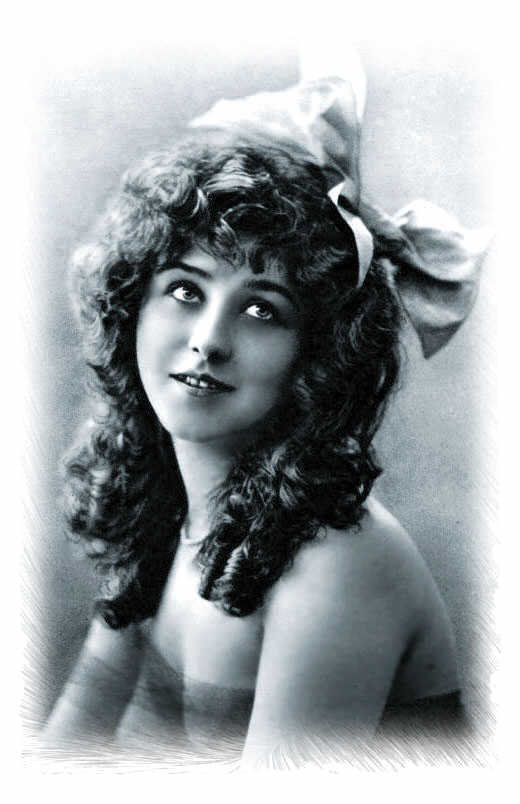 Brigitte du Buois, publicity photo (NB-148) |
Brigitte du Buois, star of the local archery concourse. Known for her skills of target shooting and stunning rendition of "Ride of the Valkyries" as Brunhilda. Said to eat only lettuce and water, she nearly perished in the Egyptian desert, save for the aid Jacques Levesque (The Mole) |
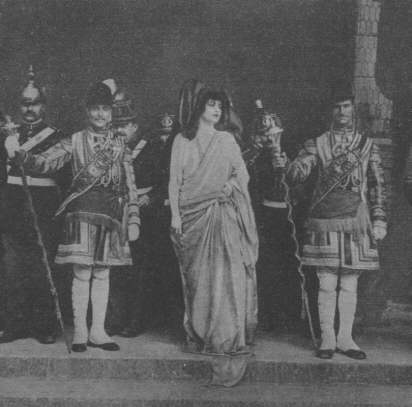 Marie Talmage, (NB-149) |
Marie Talmage. Operatic sensation of the early 1900. Seen here in the role of Caesar's wife in the South New Westshire's production of "Julius Caesar and His Salad Days". Marie was adept in arrow truing and bow making. | 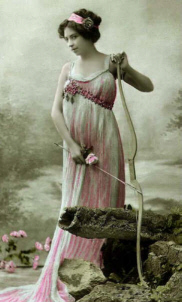 |
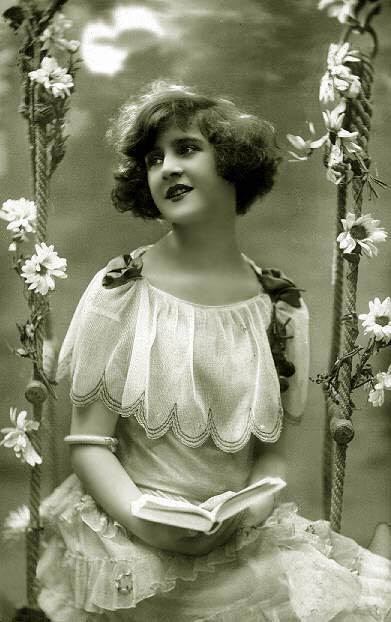 Millicent "Millie" Cambridge (NB-149)
|
Millicent "Millie" Cambridge, instructor of Archery and Clogging. Millie was usally a script reader and troop librarian. Millie had an uncanny grasp of chemistry and cooking. These skills were to prove her undoing under the poor influence of Levesque. However she later redeemed herself to T.E. Heep during the High Tea Season. |
 Tessia "Tess" LaRue Boyington (NB-150)
|
Tessia "Tess" LaRue Boyington. Modern dancer and free spirit. Tess choreographed many of the troop's dance performances. Tess was to become the center of the FC151 scandal that rocked the base in late 1917. Adept at camel riding and sand dancing, she became most cherished by the men of the Lost Squadron. |
As one might expect, the arrival of the troop was a sensation at the Lost Squadron encampment ( see "The Women Arrive"). Heep was nearly overwhelmed by the response of the men. Tickets sales for the first performance were astronomical. Black market sales were even better. Two goats and a camel could get one in the door, for a seat, well add several pitchers of ale, tobacco and a bolt of cloth! Heep, as was his nature ignored the black market as " disgusting and primitive". Having no business sense, he eschewed all attempts at bribery, or other " not quite cricket" schemes the men posed to him for admission. This was however to change once Jacques Levesque arrived on the base. Heep recorded only brief items in his diary of the event: "Show today, order cucumber sandwiches, Darjeeling tea, sconces, biscuits. Piano to be tuned for sing-song. Women present, McTavish-no kilts. Watch Comdr. Whet-Wissel, no spitting or cursing, no drinkies for him. Make troop sets and props."
Logistically, keeping women safe in a Moslem country, and on a British air drome was difficult. Heep had thought ahead enough to have a separate compound of tents erected, cordoned off by a neat, tidy row of painted stones. A sign with the word "NO" seemed sufficient, to Heep, to ensure the ladies virtue. Reluctantly, after the first night, he posted a guard by the sign to ward off any who might dare ignore the sign. The guard was authorized to use " stern words" should the sign fail in its task. Never in the history of the Squadron was there such a show of volunteers for guard duty.
The very first show began with a rousing chorus of "Hail, hail the gangs all here", followed once again by McTavish’s group of "interpretive Highland dancers" performing "Claire de Lune". The main show was of course the girls. They did not have to perform. Their mere presence caused an awed hush to fall over the usual rowdy gang. Heep in his usual manner merely recorded; " Girls here, danced. One shot an arrow through McCurdry’s hat. Men spilled my best tea. Sandwiches uneaten, bad cukes?".
We shall never know the full account of that first show, mainly due to Heep's inability to fathom the import of it all , and of course not to write anything down. However records of the "Punishment Roster" for the next morning seemed to suggest quite a night was had by all.
While we shall detail many of the adventures occuring during the Pre Mole days, the most facinating stories, known only in part from Heep’s NB, occur in the "AM or After the Mole". The full accounting may never be known, however , some pictures of the troop AM suggest a decided change occured in the nature/attitudes of the women. Individual stories should be referred to for the complete documentation.
 |
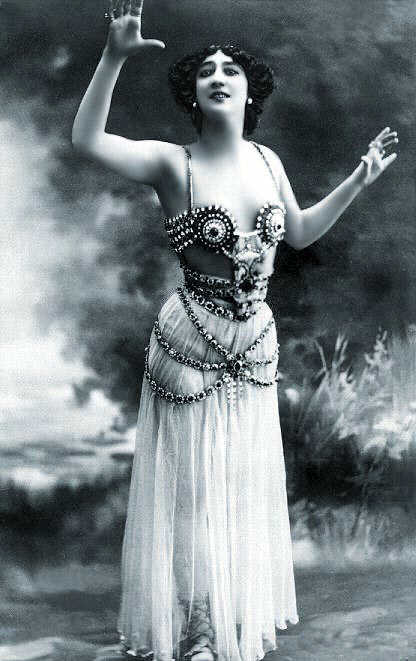 |
| Brigitte du Buois, some time after the Mole began the managership of the "Salon d’Art" and her peril in the desert. (NB 155) | Marie Talmage, former Opera singer working in the Salon. She is said to have been influenced by J. Levesque |
 |
 |
| Demure Millie Cambridge during her liasion with Levesque | Sally LeRhone, a late comer to the troop, seen here during Levesque’s " Tribute to the Middle Ages" pageant |